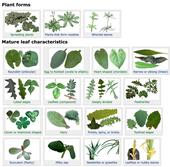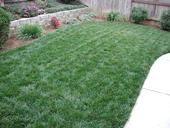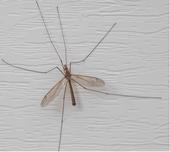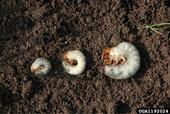- Author: Karey Windbiel-Rojas

After all the winter rains you may find yourself dealing with weeds and struggling to control them. The first step in successfully controlling weeds is knowing what weed you have. Well, you're in luck: the UC IPM website contains many useful resources to help you identify and manage weeds in the garden or landscape.
A great place to start is the Weed Gallery, which contains images and identification tips for more than 150 common weeds.
If you think you know the name of your weed, you can use the common or scientific name to view photos to confirm identification. Just use the “List of All Weeds” link from the main weed gallery page.
If...

“Kill your lawn!” has become a popular phrase and landscaping trend in recent years. Whether you are looking to completely remove your lawn or just renovate it, this article will give you useful information to help you decide how best to do away with your existing lawn and prepare for your new design.
There are many reasons someone might be looking to get rid of their lawn.
- Can be costly to maintain (water, landscapers, time, equipment, fertilizers, etc.)
- Aesthetics (desire a different look)
- Create habitat (plants for birds, pollinators, natural enemies, etc.)
- Replace groundcover (plant different grass type, install turfgrass alternative)
- Save water by...
- Author: Lauren Fordyce

Lately you may have seen some large, leggy insects bumbling around on your home, bouncing off walls and ceilings. What are these?
While many people call them “mosquito eaters” or “mosquito hawks,” they are actually crane flies. And unfortunately, they do not eat mosquitoes. Many reports claim that they bite or sting, and this is also false. The adults are harmless and many species don't even have mouthparts to feed at all! However, their larvae can be pests of lawns and turfgrass.
Larvae are to 1-1/2 inches long, brown, and wormlike with very tough skin. They may resemble white grubs, but crane fly larvae do not have legs. The majority of lawn damage from crane flies is...
- Author: Lauren Fordyce

You may be noticing white grubs in your compost piles, lawns, or garden beds. These white, c-shaped critters can be 1/4 inch long or 2 inches long, depending on the species. White grubs are the larvae of some scarab beetles, and though many of them can cause damage to our landscapes, not all of them do.
There are three species that feed on the roots of grasses, making them a potential pest to lawns when in high numbers. These species may also be found in landscape or garden beds that are near grassy areas or were recently converted from grassy areas. Compare the size of white grubs you may find, as some species are much larger or smaller than others and can help you determine which is present.
- Posted by: Lauren Fordyce
![Mature dallisgrass plant, Paspalum dilatatum. [Credit: K Windbiel-Rojas]](https://ucanr.edu/blogs/UCIPMurbanpests/blogfiles/95301small.jpg)
Knowing what weedy grass you have in your lawn or landscape is very important in being able to properly control it. Dallisgrass is a common perennial weed that is easily identified and grows in uneven clumps in lawns and turf. This growth pattern creates a tripping hazard as well as a poor playing surface for parks, front lawns, and athletic fields. Clumps must be dug out to prevent its growth. Solarization with clear plastic can help control dallisgrass.
For more details about the biology of dallisgrass, management methods, and extensive information about herbicides, see the newly updated Pest Notes: Dallisgrass, authored by UC Cooperative Extension...


